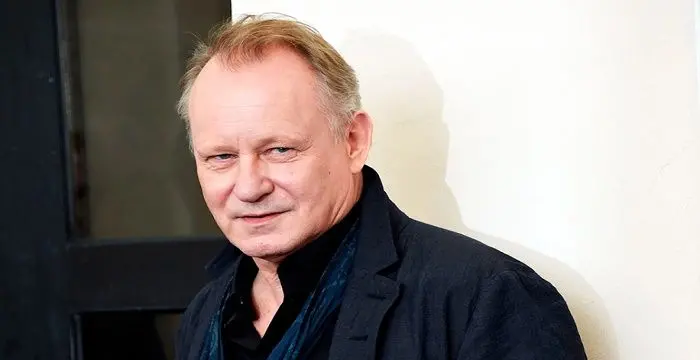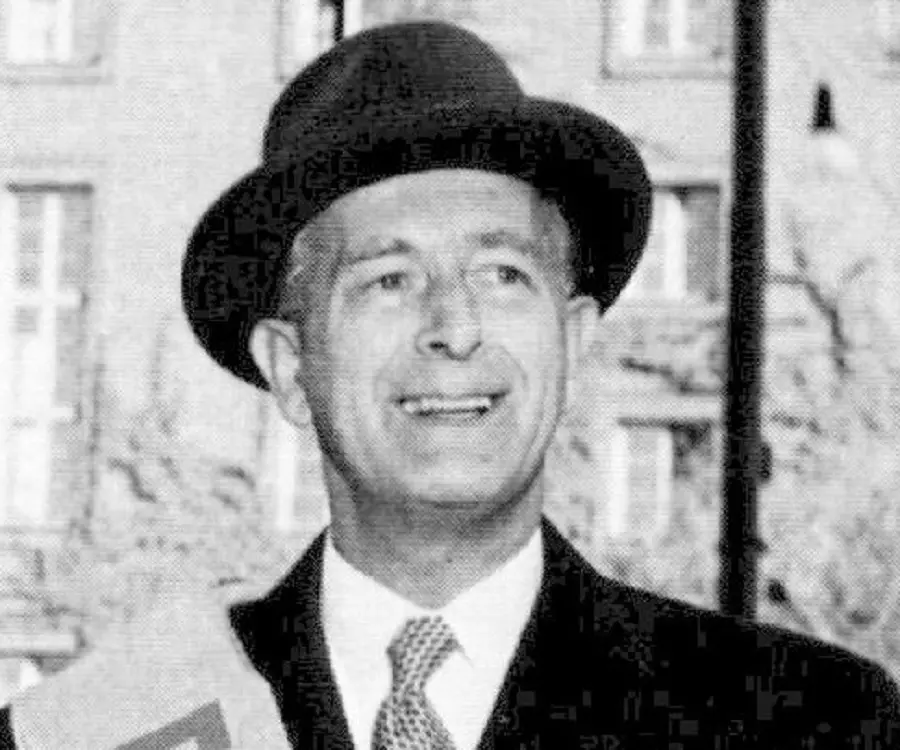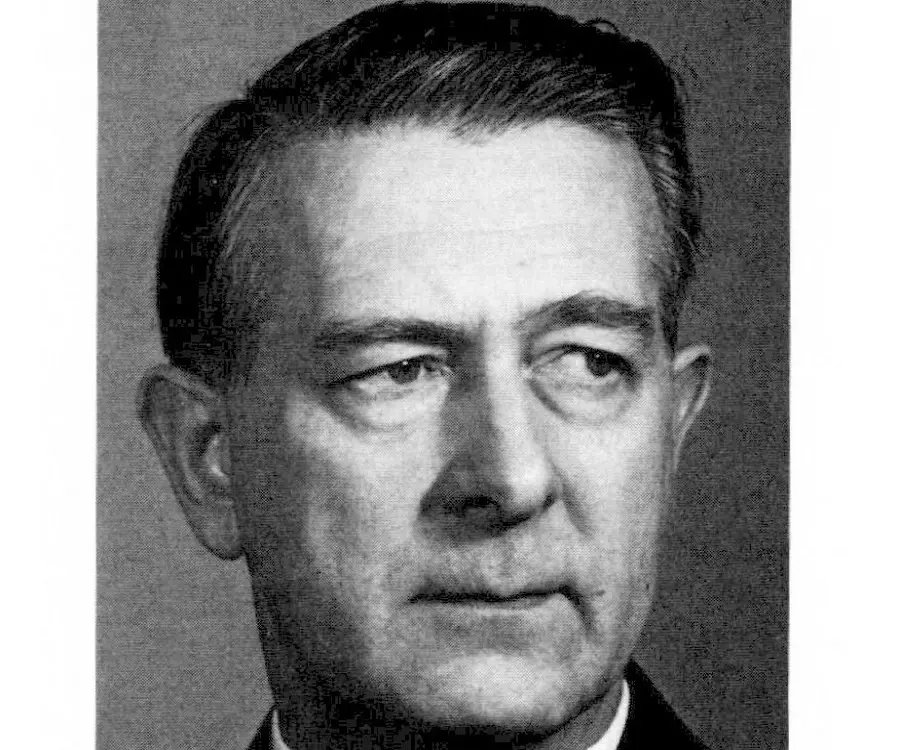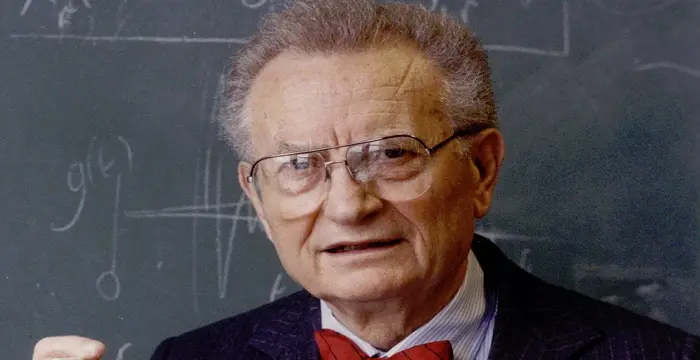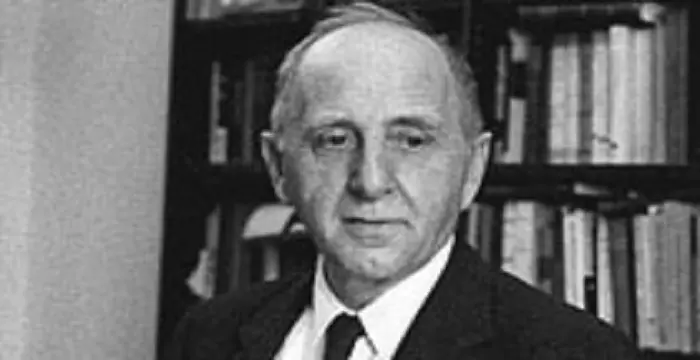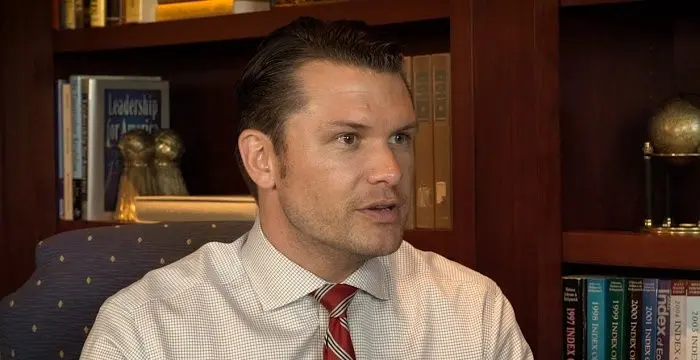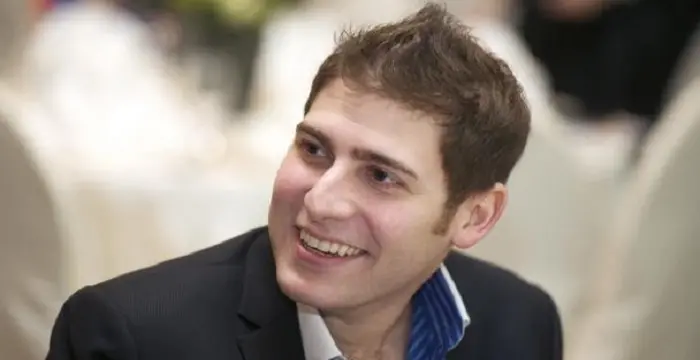
Bertil Gotthard Ohlin - Swedish Men, Timeline and Childhood
Bertil Gotthard Ohlin's Personal Details
Bertil Gotthard Ohlin was a famous Swedish economist
| Information | Detail |
|---|---|
| Birthday | April 23, 1899 |
| Died on | August 3, 1979 |
| Nationality | Swedish |
| Famous | Harvard University, Intellectuals & Academics, Economists, Swedish Men |
| Childrens | Anne Wibble |
| Universities |
|
| Notable Alumnis |
|
| Birth Place | Klippan, Scania |
| Political Ideology | Liberal People's Party |
| Gender | Male |
| Sun Sign | Taurus |
| Born in | Klippan, Scania |
| Famous as | Economist |
| Died at Age | 80 |
// Famous Swedish Men
Joel Kinnaman
Joel Kinnaman is an actor best known for appearing in the Swedish film ‘Easy Money.’ Check out this biography to know about his birthday, childhood, family life, achievements, and fun facts about him.
Stellan Skarsgård
Stellan Skarsgard is a Swedish actor known for his role in the flick ‘Breaking the Waves.’ Check out this biography to know about his birthday, childhood, family life, achievements and fun facts about him.
Valter Skarsgård
Valter Skarsgård is the youngest son of famous Swedish actors, Stellan Skarsgård and My Skarsgård. Let’s have a look at his family, personal life, career, age, birthday, etc.
Bertil Gotthard Ohlin's photo
Who is Bertil Gotthard Ohlin?
Bertil Gotthard Ohlin was a Swedish economist credited to have revolutionised international trade. Ohlin was fundamental in paving the way for new reforms to boost the economy of a country through its international and interregional trade. His tremendous research and studies in this domain exposed new ideologies in the field of trade. The basic principle that his theory outlined was that every country should export goods that used a factor that is abundantly available in its region, and on the other hand must import goods that used a factor that is scarcely produced or found in the region. His outstanding contribution towards ‘International Capital Movements and International Trade’ won him a Nobel Prize in Economic Sciences. Being a professor, he was more socially inclined and took sincere interest in politics to bring about changes for the betterment of society. With a liberal stance, he joined the People’s (Liberal) Party and became its leader. Known to be an amiable gentleman, he was friendly and attractive, collectively both his wit and magnetism impressed many an economist all around the globe.
// Famous Intellectuals & Academics
Emily Greene Balch
Emily Greene Balch was an American economist, sociologist and pacifist who won the 1946 Nobel Peace Prize. This biography of Emily Greene Balch provides detailed information about her childhood, life, achievements, works & timeline.
Martin Buber
One of the greatest philosophers to have ever walked on earth, Martin Buber contributions to philosophy is a long-standing one. Explore all about his profile, childhood, life and timeline here.
Paul Samuelson
Nobel laureate Paul Anthony Samuelson is referred to as the ‘Father of Modern Economics’. This biography profiles his childhood, life, career, achievements and interesting facts about him.
Childhood and Early life
Ohlin was born into an upper-middle class family on 23 April, 1899, at the village of Klippan in Sweden, where he lived in a large home with his parents and six siblings.
His father was a district attorney and held a respectable position in society. His father provided him with a little private tutelagebefore he entered school at the age of seven years.
In school he displayed a brilliant aptitude for mathematics which was his favourite subject. He achieved his baccalaureate at ‘Halsingborg’ much earlier than other children of his age.
Owing to his propensity toward calculations and much to his delight, his parents suggested that he get enrolled for a degree in mathematics, statistics and economics at the ‘University of Lund’. At the university he studied under Professor Smil Sommarin and scored the highest in economics when he passed out of the university in 1917.
He was greatly influenced by an article that he read in a newspaper that reviewed a book on ‘Economic Aspects of the World War’ written by Eli Heckscher, who was then a professor at Stockholm Business School.
Thus, he packed his bags and marched off to study under Heckscher’s guidance, where he not only received plenty of knowledge but also propagated principles that would in future solve profit-maximising problems.
After two years at Stockholm he went on to attain an M.A. degree from Harvard University after which he bagged his doctorate degree from Stockholm University in 1924.
Teaching Career
He applied for a jobat the University of Copenhagen and was appointed as a professor in January1925.
At Copenhagen Ohlin worked for five years, where he was influenced greatly by the humorous and highly intellectual Dr. L.V. Birck. At the university he also maintained a close rapport with his students.
In 1928 he sent a thesis to Harvard for the ‘David Well’s Prize’; however he received a letter the same year that the prize had been awarded to another economist. But they offered to print his manuscript in the ‘Harvard Economic Studies’.
Thrilled by the offer, he finished his manuscript in 1931. By this time he had begun working as a professor at Stockholm School of Business, where he was appointed as Heckscher’s successor.
Theorem on International Trade
It was after he joined Stockholm as professor that he began working on his International Trade Theorem, which came to be called the ‘Heckscher-Ohlin model of International Trade.’
Along with his teacher he proposed a principle that laid emphasis on trade between two countries which rested primarily on two goods of production and two factors of production such as relative amounts of capital and labour.
The theorem states that countries that are capital-abundant would have to pay higher wages and thus industries depending on labour would crush the economy of the country.
It was appropriate for such countries to produce in abundance goods that did not depend much on manual labour such as automobiles and chemicals, and import goods high on labour-value.
In contrast to this, countries low on capital and high in labour should generate goods that can be extensively acquired through labour – like textiles and simple electronics and import goods that are capital intensive.
However today’s economists point out that there are bound to be repercussions in such a theory, as this would suggest that the two countries must share the same needs and reply on only two goods.
Later Career As An Economist
This theory won him popularity and he was invited as a guest lecturer to deliver Marshall Lectures at Cambridge.
This provided him the opportunity of summarising the Swedish Theory, and thus he ended up making comparisons to Keynes’ work.
It was at this point that he got into a grave controversy with John Maynard Keynes as he contradicted several of Keynesian theories especially those pertaining to the war reparations that Germany had to pay.
Political Career
It was in 1944 that he became the leader of the Liberal Party where he retained the position for 23 years. This created a setback in his economist career.
Since the Liberal Party was the leading opposition party, he couldn’t dedicate any of his time to research. As a political leader, he always remained positive to social reforms.
His party opposed any form of nationalisation especially in Swedish industries or any controlling of economic life by the state.
Following the constitutional reform in 1968 that demolished the two chamber system, Ohlin retired from the parliament in 1970.He resumed writing articles andtaking lectures and researched further on his ‘Monetary Theory’ and ‘Inflation-protected Taxation’.
Despite his various accomplishments, Bertil Ohlin once confessed that as a result of attempting too many avenues at the same time he was unable to contribute sufficient time to each of the roles that he played as teacher, researcher, writer and political leader.
Major Works
As an economist he initiated a number of theorems that proved to be path breaking in the field of economics. His book on ‘International & Interregional Trade’ stirred the concepts of economy, highlighting essential factors of labour and finance on which trade was dependent.
Ohlin’s monetary theory in1929 attracted economists from all around the word to tune into the debate between him and Keynes.
As a political leader, he successfully led his party for over two decades. It was because of his intense calibre that until 1970 no nationalisation of Swedish industry had taken place.
Apart from macroeconomics, towards the latter part of his career he stressed upon the creation of an economic union by bridging social legislation and tax systems.
Alongside theorems, Ohlin wrote numerous articles and reports, some of which were–‘The Equilibrium Rate of Exchange’ in 1921 and ‘Tendencies in Swedish Economics’ in 1927 along with ‘The German Reparations Problem’ 1930.
In 1931 he wrote a report to the League of Nations on ‘The Cause and Phases of the World Economic Depression’. He also published ‘Mechanisms and Objectives of Exchange Controls’ in 1937.
In 1956 he drafted the ‘Ohlin Report’ along with a few other experts who belonged to the ‘International Labour Organisation’, pertaining to the ‘Treaty of Rome’ on common markets and the creation of the ‘European Economic Community’.
Awards & Achievements
He was jointly awarded the Sveriges Riksbank Prize in Economic Sciences in Memory of Alfred Nobel in 1977, along with James Meade “for their path breaking contribution to the theory of international trade and international capital movements."
Personal Life & Legacy
He died at the age of 80 on 3 August in 1979.
The institute of ‘Stiftelsen Bertil Ohlin’ built in 1933 still continues the work initiated by Ohlin himself in research and debate.
Trivia
In an interview Ohlin stated that his interest for economics developed when he was five years old. He loved calculations, and at that age he used to calculate the cost of the different types of cakes his mother used to bake.
// Famous Economists
Emily Greene Balch
Emily Greene Balch was an American economist, sociologist and pacifist who won the 1946 Nobel Peace Prize. This biography of Emily Greene Balch provides detailed information about her childhood, life, achievements, works & timeline.
Paul Samuelson
Nobel laureate Paul Anthony Samuelson is referred to as the ‘Father of Modern Economics’. This biography profiles his childhood, life, career, achievements and interesting facts about him.
Simon Kuznets
Simon Kuznets was a noted Russian-American economist, statistician, demographer, and economic historian. Check out this biography to know about his childhood, family life, achievements and other facts related to his life.
Bertil Gotthard Ohlin's awards
| Year | Name | Award |
|---|---|---|
Other | ||
| 0 | 1977 - Nobel Memorial Prize in Economic Sciences | |
Bertil Gotthard Ohlin biography timelines
- // 23rd Apr 1899Ohlin was born into an upper-middle class family on 23 April, 1899, at the village of Klippan in Sweden, where he lived in a large home with his parents and six siblings.
- // 1917Owing to his propensity toward calculations and much to his delight, his parents suggested that he get enrolled for a degree in mathematics, statistics and economics at the ‘University of Lund’. At the university he studied under Professor Smil Sommarin and scored the highest in economics when he passed out of the university in 1917.
- // 1921 To 1930Alongside theorems, Ohlin wrote numerous articles and reports, some of which were–‘The Equilibrium Rate of Exchange’ in 1921 and ‘Tendencies in Swedish Economics’ in 1927 along with ‘The German Reparations Problem’ 1930.
- // 1924After two years at Stockholm he went on to attain an M.A. degree from Harvard University after which he bagged his doctorate degree from Stockholm University in 1924.
- // 1925He applied for a jobat the University of Copenhagen and was appointed as a professor in January1925.
- // 1928In 1928 he sent a thesis to Harvard for the ‘David Well’s Prize’; however he received a letter the same year that the prize had been awarded to another economist. But they offered to print his manuscript in the ‘Harvard Economic Studies’.
- // 1929Ohlin’s monetary theory in1929 attracted economists from all around the word to tune into the debate between him and Keynes.
- // 1931Thrilled by the offer, he finished his manuscript in 1931. By this time he had begun working as a professor at Stockholm School of Business, where he was appointed as Heckscher’s successor.
- // 1931In 1931 he wrote a report to the League of Nations on ‘The Cause and Phases of the World Economic Depression’. He also published ‘Mechanisms and Objectives of Exchange Controls’ in 1937.
- // 1933The institute of ‘Stiftelsen Bertil Ohlin’ built in 1933 still continues the work initiated by Ohlin himself in research and debate.
- // 1944It was in 1944 that he became the leader of the Liberal Party where he retained the position for 23 years. This created a setback in his economist career.
- // 1956In 1956 he drafted the ‘Ohlin Report’ along with a few other experts who belonged to the ‘International Labour Organisation’, pertaining to the ‘Treaty of Rome’ on common markets and the creation of the ‘European Economic Community’.
- // 1977He was jointly awarded the Sveriges Riksbank Prize in Economic Sciences in Memory of Alfred Nobel in 1977, along with James Meade “for their path breaking contribution to the theory of international trade and international capital movements."
- // 3rd Aug 1979He died at the age of 80 on 3 August in 1979.
// Famous Harvard University
Xi Mingze
Xi Mingze is the daughter of Chinese Leader Xi Jinping, Check out this biography to know about her birthday, childhood, family life, achievements and fun facts about her.
Susan Sontag
Susan Sontag is an American critical essayist, cultural analyst, novelist, political activist, filmmaker and playwright of international repute. Read on to find out more about her childhood, career, profile and timeline.
Pete Hegseth
Pete Hegseth is a FOX News Channel contributor from America. Check out this biography to know about his childhood, family life, achievements and fun facts about him.
Paul Samuelson
Nobel laureate Paul Anthony Samuelson is referred to as the ‘Father of Modern Economics’. This biography profiles his childhood, life, career, achievements and interesting facts about him.
Michael Schur
Michael Schur is an American television actor, producer, and writer. Check out this biography to know about his birthday, childhood, family life, achievements and fun facts about him.
Eduardo Saverin
Eduardo Luiz Saverin is a Brazilian internet entrepreneur and investor. This biography profiles his childhood, life, career, achievements, and timeline
Bertil Gotthard Ohlin's FAQ
What is Bertil Gotthard Ohlin birthday?
Bertil Gotthard Ohlin was born at 1899-04-23
When was Bertil Gotthard Ohlin died?
Bertil Gotthard Ohlin was died at 1979-08-03
Which age was Bertil Gotthard Ohlin died?
Bertil Gotthard Ohlin was died at age 80
Where is Bertil Gotthard Ohlin's birth place?
Bertil Gotthard Ohlin was born in Klippan, Scania
What is Bertil Gotthard Ohlin nationalities?
Bertil Gotthard Ohlin's nationalities is Swedish
Who is Bertil Gotthard Ohlin childrens?
Bertil Gotthard Ohlin's childrens is Anne Wibble
What was Bertil Gotthard Ohlin universities?
Bertil Gotthard Ohlin studied at Harvard University, BA, University of Lund (1917), MA, Harvard University (1923), PhD, Stockholm University (1924)
What was Bertil Gotthard Ohlin notable alumnis?
Bertil Gotthard Ohlin's notable alumnis is Harvard University
What is Bertil Gotthard Ohlin's political ideology?
Bertil Gotthard Ohlin's political ideology is Liberal People's Party
What is Bertil Gotthard Ohlin's sun sign?
Bertil Gotthard Ohlin is Taurus
How famous is Bertil Gotthard Ohlin?
Bertil Gotthard Ohlin is famouse as Economist

